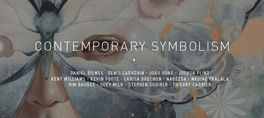Desta Gallery, known for its custom-blended organic teas and gallery featuring world-class artwork, will hold a workshop on the ancient art and tradition of the Japanese Tea Ceremony.
Desta’s tea-gathering (chakai) will be hosted by Kaoru Sohkun Henderson, a tea-teacher of the popular school of the Way of Tea, the Urasenke School. She will be assisted by Michael Fischer who will serve as narrator to describe the objectives of Chanoyu, the phases of the procedure, and the etiquette of host and guest.
Participation in a Japanese Tea Ceremony, as it is referred to in the West, has been likened to a "dance of charity between host and guests," and also as a form of "kinetic meditation." Brought to Japan from China by Buddhist monks in the 9th century, its simplified ritual was codified by Sen Rikyu in the 1500s. Embodying the values of wabi and sabi, its refined procedures are meant to "demonstrate respect through grace." In Japan, it is referred to as Chado, or The Way of Tea, describing a Way of approaching life - even outside the tearoom.
Each action in making tea, and there can be as many as 300 separate steps, each requiring precision and smooth gracefulness, is focused on the preparation of a bowl of refreshing, good-tasting matcha tea.
show less
Desta’s tea-gathering (chakai) will be hosted by Kaoru Sohkun Henderson, a tea-teacher of the popular school of the Way of Tea, the Urasenke School. She will be assisted by Michael Fischer who will serve as narrator to describe the objectives of Chanoyu, the phases of the procedure, and the etiquette of host and guest.
Participation in a Japanese Tea Ceremony, as it is referred to in the West, has been likened to a "dance of charity between host and guests," and also as a form of "kinetic meditation." Brought to Japan from China by Buddhist monks in the 9th century, its simplified ritual was codified by Sen Rikyu in the 1500s. Embodying the values of wabi and sabi, its refined procedures are meant to "demonstrate respect through grace." In Japan, it is referred to as Chado, or The Way of Tea, describing a Way of approaching life - even outside the tearoom.
Each action in making tea, and there can be as many as 300 separate steps, each requiring precision and smooth gracefulness, is focused on the preparation of a bowl of refreshing, good-tasting matcha tea.
Desta Gallery, known for its custom-blended organic teas and gallery featuring world-class artwork, will hold a workshop on the ancient art and tradition of the Japanese Tea Ceremony.
Desta’s tea-gathering (chakai) will be hosted by Kaoru Sohkun Henderson, a tea-teacher of the popular school of the Way of Tea, the Urasenke School. She will be assisted by Michael Fischer who will serve as narrator to describe the objectives of Chanoyu, the phases of the procedure, and the etiquette of host and guest.
Participation in a Japanese Tea Ceremony, as it is referred to in the West, has been likened to a "dance of charity between host and guests," and also as a form of "kinetic meditation." Brought to Japan from China by Buddhist monks in the 9th century, its simplified ritual was codified by Sen Rikyu in the 1500s. Embodying the values of wabi and sabi, its refined procedures are meant to "demonstrate respect through grace." In Japan, it is referred to as Chado, or The Way of Tea, describing a Way of approaching life - even outside the tearoom.
Each action in making tea, and there can be as many as 300 separate steps, each requiring precision and smooth gracefulness, is focused on the preparation of a bowl of refreshing, good-tasting matcha tea.
read more
Desta’s tea-gathering (chakai) will be hosted by Kaoru Sohkun Henderson, a tea-teacher of the popular school of the Way of Tea, the Urasenke School. She will be assisted by Michael Fischer who will serve as narrator to describe the objectives of Chanoyu, the phases of the procedure, and the etiquette of host and guest.
Participation in a Japanese Tea Ceremony, as it is referred to in the West, has been likened to a "dance of charity between host and guests," and also as a form of "kinetic meditation." Brought to Japan from China by Buddhist monks in the 9th century, its simplified ritual was codified by Sen Rikyu in the 1500s. Embodying the values of wabi and sabi, its refined procedures are meant to "demonstrate respect through grace." In Japan, it is referred to as Chado, or The Way of Tea, describing a Way of approaching life - even outside the tearoom.
Each action in making tea, and there can be as many as 300 separate steps, each requiring precision and smooth gracefulness, is focused on the preparation of a bowl of refreshing, good-tasting matcha tea.
show less
Date/Times:
Desta Gallery
417 San Anselmo Ave, San Anselmo, CA 94960
The Best Events
Every Week in Your Inbox
From Our Sponsors
UPCOMING EVENTS
Great suggestion! We'll be in touch.
Event reviewed successfully.











